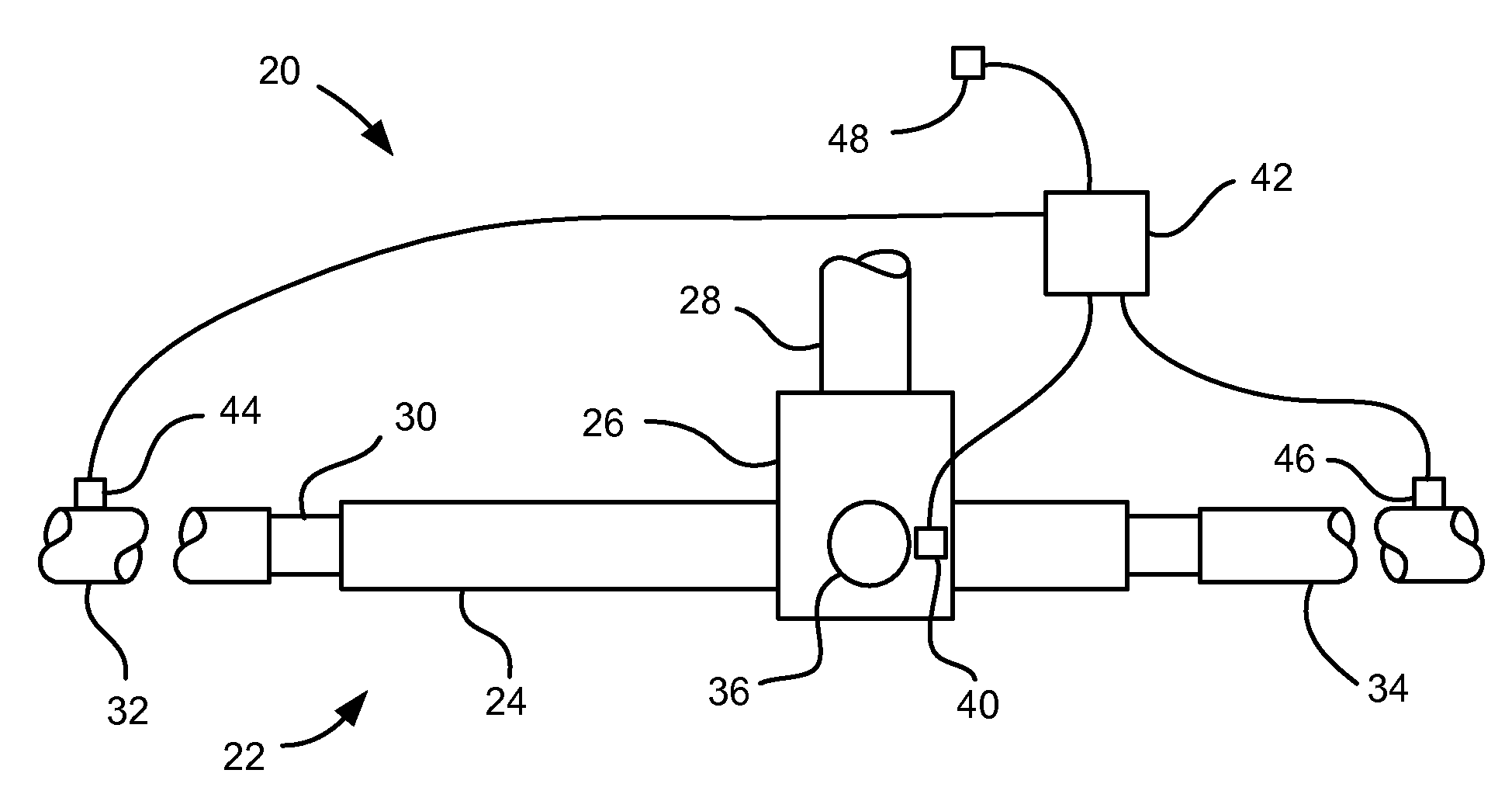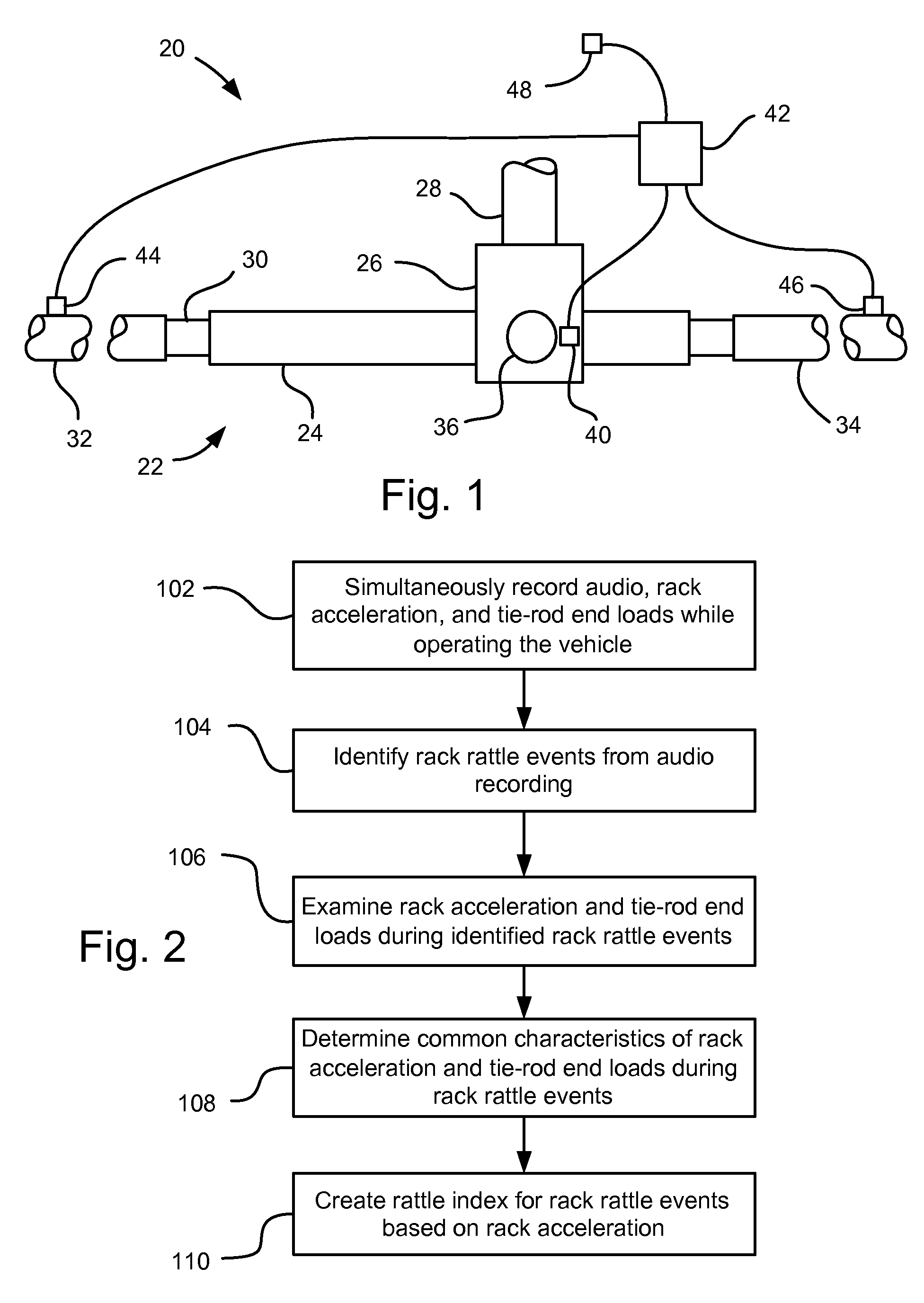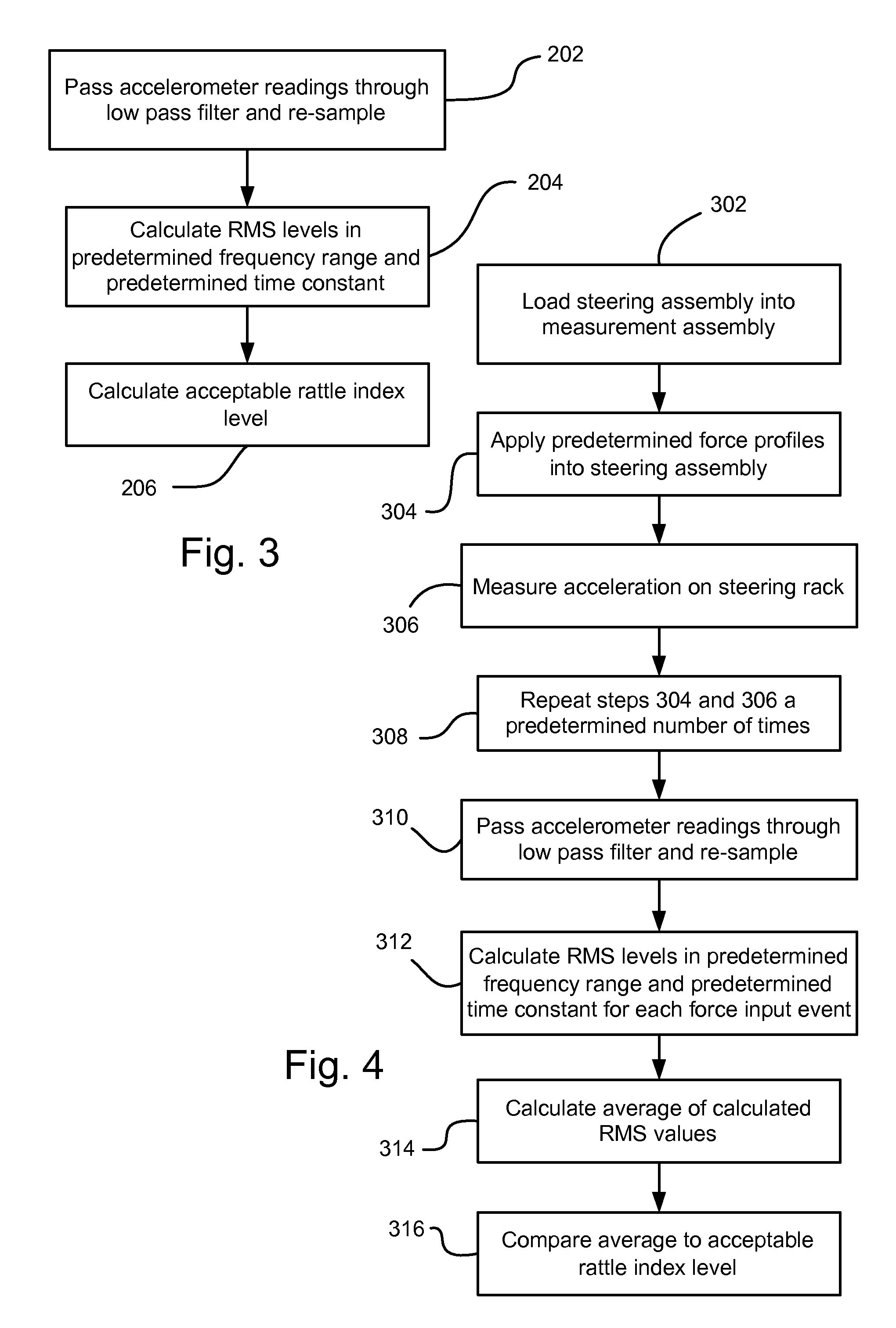Test procedure for determining steering rack rattle
a steering rack and test procedure technology, applied in the direction of mechanical measuring arrangements, instruments, nuclear elements, etc., can solve the problems of increased clearance between components, wear at the interface of the rack with the pinion and in the system, and rattles inside the steering rack that can be heard by the vehicle occupants, so as to reduce the cost and the amount of data
- Summary
- Abstract
- Description
- Claims
- Application Information
AI Technical Summary
Benefits of technology
Problems solved by technology
Method used
Image
Examples
Embodiment Construction
[0012]Referring to FIG. 1, a vehicle, indicated generally at 20, is shown. The vehicle 20 includes a steering assembly 22, which includes a steering rack housing 24. A gear housing 26 receives a steering shaft 28. The steering shaft 28 may have a conventional pinion gear (not shown) that mates with a conventional rack gear (not shown) on a rack 30 that slides telescopically back and forth in the steering rack housing 24. An adjuster plug 36 may be employed to bias the pinion gear and rack gear into contact with each other to limit rattle between the two. The rack 30 engages a right side tie-rod 32 at a first end and a left side tie-rod 34 at an opposite end. The right and left side tie-rods 32, 34 engage other steering assembly components (not shown) in a conventional fashion for pivoting vehicle wheels (not shown). The components discussed above may be essentially conventional, if so desired, and so will not be discussed further herein. Also, this steering assembly 22 may be mounte...
PUM
 Login to View More
Login to View More Abstract
Description
Claims
Application Information
 Login to View More
Login to View More - R&D
- Intellectual Property
- Life Sciences
- Materials
- Tech Scout
- Unparalleled Data Quality
- Higher Quality Content
- 60% Fewer Hallucinations
Browse by: Latest US Patents, China's latest patents, Technical Efficacy Thesaurus, Application Domain, Technology Topic, Popular Technical Reports.
© 2025 PatSnap. All rights reserved.Legal|Privacy policy|Modern Slavery Act Transparency Statement|Sitemap|About US| Contact US: help@patsnap.com



